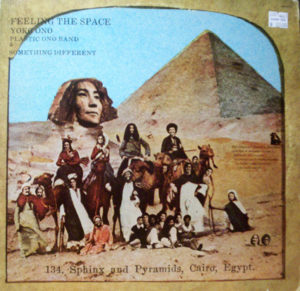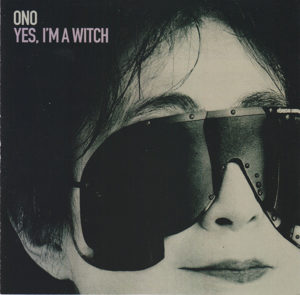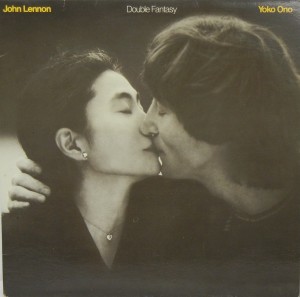Yoko Ono / Plastic Ono Band & Something Different – Feeling the Space Apple SW-3412 (1973)
Yoko Ono’s 1973 album Feeling the Space tends to be relegated to the dustbin of history. But why? This is one of her most “mainstream” pop/rock recordings, relying on a lot of fairly conventional rock-ish genre devices. There is even a faint hint of the ironic/unironic use of kitsch that propelled the Brazilian tropicalistas starting in the late 1960s. Frequently derided by audiences opposed to her basic artistic purposes, often under the blanket criticism of her alleged lack of talent, Ono actually had formal musical training as a child. She proves here — for anyone needing such confirmation — that she can sing conventionally and on pitch. Though by singing in a second language, her Japanese accent lends her vocals a warbly, primitivist quality. The lyrics reflect the heyday of second-wave feminism during which the album was recorded. I happen to find this an immanently listenable album that deserves credit for reaching out beyond the confines of frequently elitist avant-garde practices and into popular forms. John Berger, in “The Primitive and the Professional,” New Society 1976 (reprinted in About Looking), said:
“the ‘clumsiness’ of primitive art is the precondition of its eloquence. What it is saying could never be said with any ready-made skills. For what it is saying was never meant, according to the cultural class system, to be said.”
Ono complicates the primitive vs. professional dichotomy by combining a sense of the primitive with erudite theory and overtly popular forms executed with conventional precision. While few individual songs here stand out like a “hit single”, except perhaps “Women Power,” it is very refreshing to hear music drawing from eclectic genres performed so consistently competently, paired with lyrics that evidence an intelligent moral center. While no “lost classic”, Feeling the Space exhibits many of the same strengths that are also overlooked in CAN‘s albums Flowmotion and CAN from later in the decade, as well as critically applauded features of Gil Scott-Heron and Brian Jackson‘s recordings from the early/mid 70s.



